
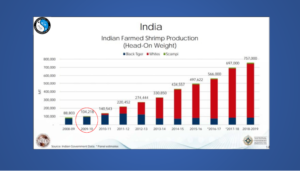
What is Synbiotics?
Prebiotics + Probiotics + Fermentation = Synbiotics
Synbiotics is a ”management tool” for quickly stabilizing the water quality and pond bottoms to help control pathogenic disease outbreaks (Vibriosis, EMS, WFD, WSSV…).
The fermentation of specific prebiotics provides the substrate, energy and soluble nutrients to sustain colonies of beneficial bacteria.
Wikipedia: Prebiotics
“A non-digestible food ingredient that promotes the growth of beneficial microorganisms.”
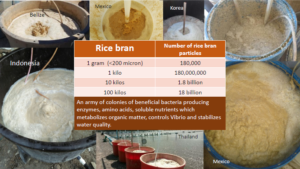
India has been doing Synbiotics for 15+ years!
India rice bran protocol
• Rice bran (de-oiled)
• Jaggery (cane sugar)
• Nut cake (peanut byproduct)
• Yeast
• Fresh water
• 48 hour aerobic fermentation
Synbiotic rice bran protocol
• Rice bran (with fats)
• Probiotic
• Enzymes
• Buffer (Na2HO3 or CaC03)
• Freshwater (sterilized)
• 24 hour aerobic fermentation
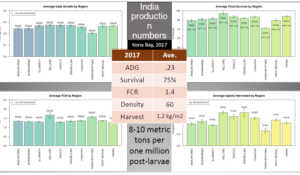
Lower cost of production using synbiotics (FRB)
• 250 ponds (6 farms)
• Small earthen ponds
• Stocking density: 40/m2
• Survival: 70%
• Harvest size: 25 grams
• $1.00 US dollar less per kilo
• Lower COG by 25-30%
• Less water exchange
• Balanced water quality
• Faster growth, shorter cycle
• Lower FCR
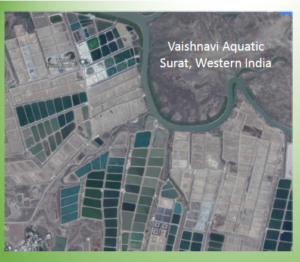
Synbiotics is still a relatively new management tool.
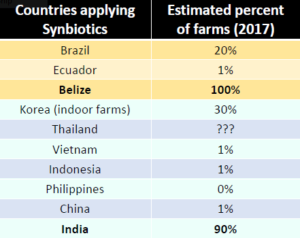
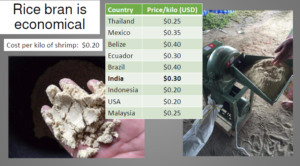
Protocol for fermenting rice bran
Ingredients Amounts
Rice bran (12-20% fat) 1 kilogram
Seawater (sterilized) 10 liters
Enzyme / Probiotic 1-2 ml / 2-3 grams
Buffer – Na2(HO3) or CaC03 50 g. (5%) per kilo RB
Aeration Moderate to strong
PPM – based on dry weight of rice bran
Dosage – this is the minimum recommended ppm daily dosage (can treat every 2 or 3 days)
Adjustment of dosage – dosage of FRB can be adjusted according to fluctuations in pH, bluegreen algae, DO, vibrio counts, turbidity, etc)
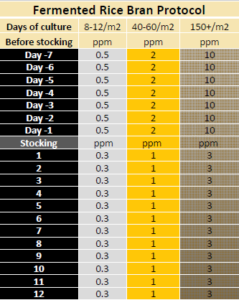
Benefits of Synbiotics
Control pathogens Especially Vibriosis, EMS/APHNS, White Feces, WSSV
Stabilize water quality pH y oxygen quickly “locked”; promote diatoms
C:N ratio balanced 12:1 C:N ratio; control cyanobacteria (BGA)
Zero water exchange Less exchange, less impact on water parameters
Lower FCR <10-30% FCR, balanced pond, live food, fast growth
Less organic material 10-20% of pure biofloc; clean bottom; less sediments
Shrimp more active System balanced; resistant to changes in parameters
All salinities Zero to 45 ppm salinity; all shrimp species
All culture systems Hatchery, nursery, intensive, super and extensive
Synbiotics is a multi-faceted management tool eliminates the use of antibiotics

Gain in Survival by culture system
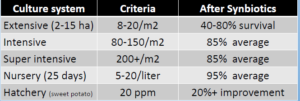
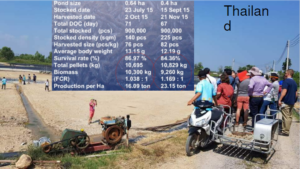
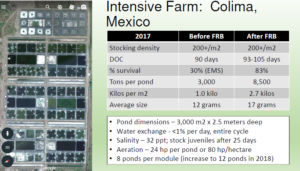
• 1st cycle with FRB: 394 metric tons in 6 modulo (48 ponds)
• Stocking density: 200 juveniles/m2
• Days of culture: 93-105; FCR: 1.6; FRB: 5 ppm per day
• Harvest range: 14-20 grams
• Tons per hectare: 27.3 metric tons
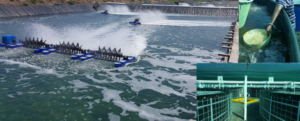
Medan, Indonesia
2017 Before After
Survival 30-40% 85-93%
DOC (direct stock) 100 days 120 days
Harvest size 22 grams 26 grams
Stocking density 100/m2 100/m2
• 5,000 m2 with liner, rectangular
• 20 hp per pond
• Before 30-40% (white feces, EMS, EHP)
• 3 ppm FRB every 2 days
• Siphon daily; center drain
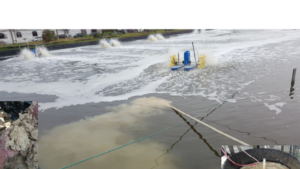
Double fermentation:
Anaerobic fermentation – 24 hours
Aerobic fermentation – 24 hours
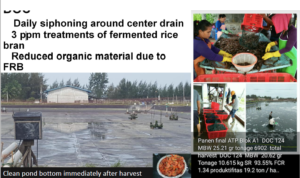
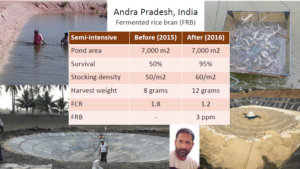
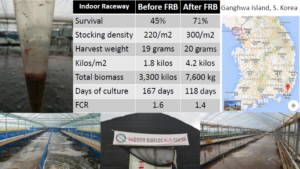
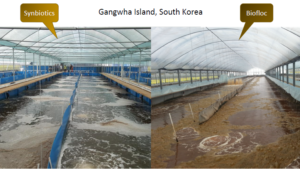
Outdoor and indoor farms in Brazil
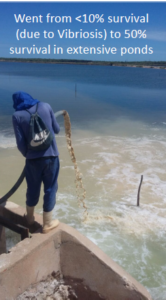
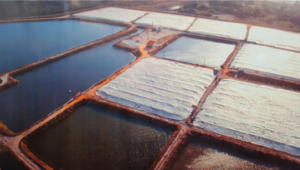
• Liner and earthen bottom
• 80%+ survival with FRB
• Center drain (some with toilet)
• 2-phase culture systems
• Density: 150-250 per m2
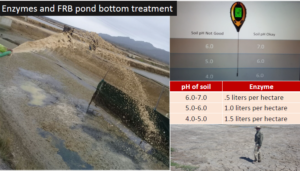
How do you know that Synbiotics (FRB) is working?
Parameters Criteria
Turbidity 30-50 cm secchi disk; <1.0 ml floc in Inhoff cone
Vibrio counts Lower CFU’s of yellow and green colonies
pH pH “locked”; .2 -.3 range between AM and PM
DO Dissolved oxygen stable between AM and PM
Color Pond water color is brown-green to gold-brown
Cyanobacteria Below 5% prevalence
Zooplankton, worms Presence of micro-organisms (copepods, rotifers, amphipods, worms)
Source: Society of Aquaculture Farmers (SAP)
